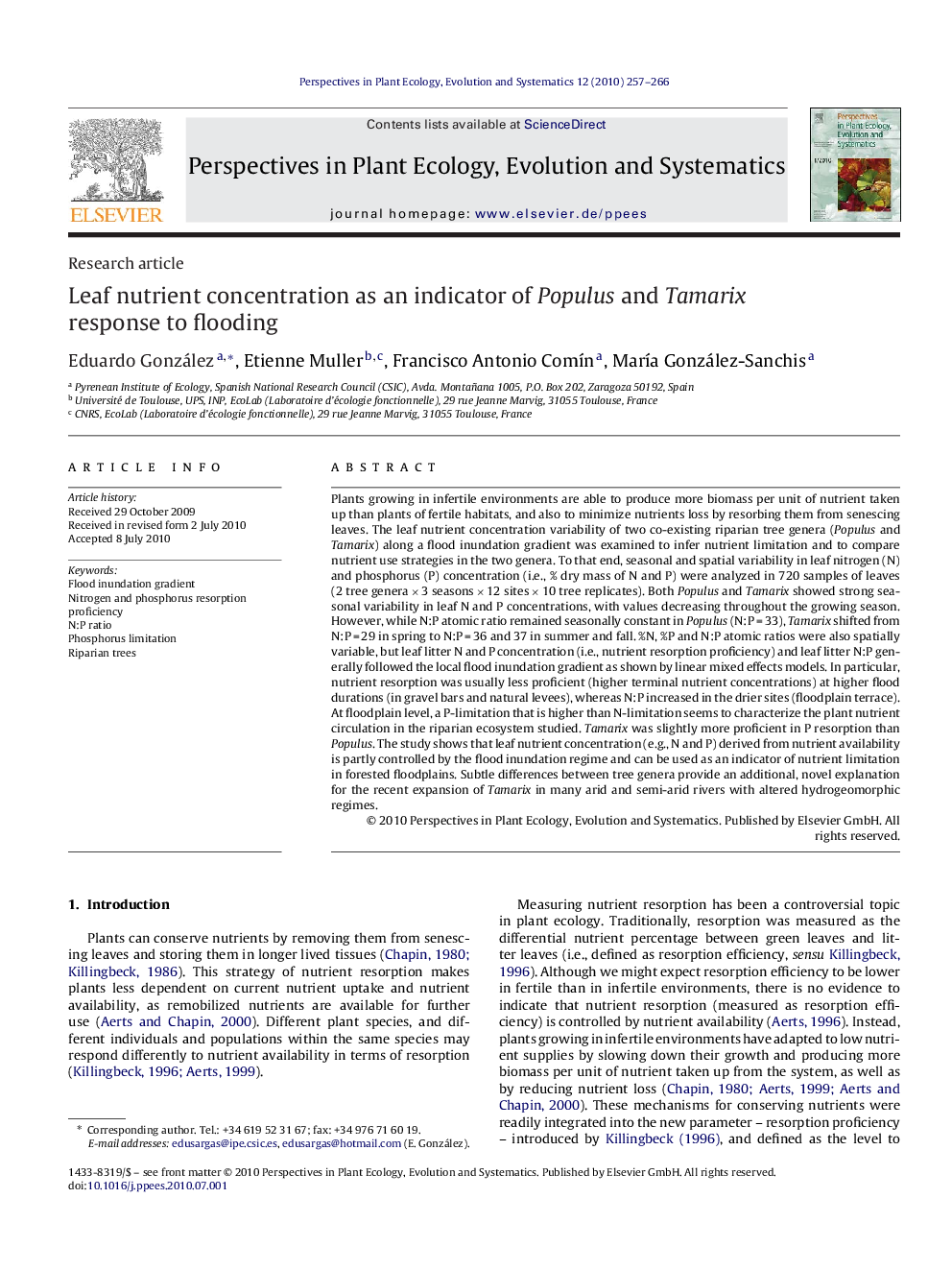| Article ID | Journal | Published Year | Pages | File Type |
|---|---|---|---|---|
| 4401121 | Perspectives in Plant Ecology, Evolution and Systematics | 2010 | 10 Pages |
Plants growing in infertile environments are able to produce more biomass per unit of nutrient taken up than plants of fertile habitats, and also to minimize nutrients loss by resorbing them from senescing leaves. The leaf nutrient concentration variability of two co-existing riparian tree genera (Populus and Tamarix) along a flood inundation gradient was examined to infer nutrient limitation and to compare nutrient use strategies in the two genera. To that end, seasonal and spatial variability in leaf nitrogen (N) and phosphorus (P) concentration (i.e., % dry mass of N and P) were analyzed in 720 samples of leaves (2 tree genera × 3 seasons × 12 sites × 10 tree replicates). Both Populus and Tamarix showed strong seasonal variability in leaf N and P concentrations, with values decreasing throughout the growing season. However, while N:P atomic ratio remained seasonally constant in Populus (N:P = 33), Tamarix shifted from N:P = 29 in spring to N:P = 36 and 37 in summer and fall. %N, %P and N:P atomic ratios were also spatially variable, but leaf litter N and P concentration (i.e., nutrient resorption proficiency) and leaf litter N:P generally followed the local flood inundation gradient as shown by linear mixed effects models. In particular, nutrient resorption was usually less proficient (higher terminal nutrient concentrations) at higher flood durations (in gravel bars and natural levees), whereas N:P increased in the drier sites (floodplain terrace). At floodplain level, a P-limitation that is higher than N-limitation seems to characterize the plant nutrient circulation in the riparian ecosystem studied. Tamarix was slightly more proficient in P resorption than Populus. The study shows that leaf nutrient concentration (e.g., N and P) derived from nutrient availability is partly controlled by the flood inundation regime and can be used as an indicator of nutrient limitation in forested floodplains. Subtle differences between tree genera provide an additional, novel explanation for the recent expansion of Tamarix in many arid and semi-arid rivers with altered hydrogeomorphic regimes.
